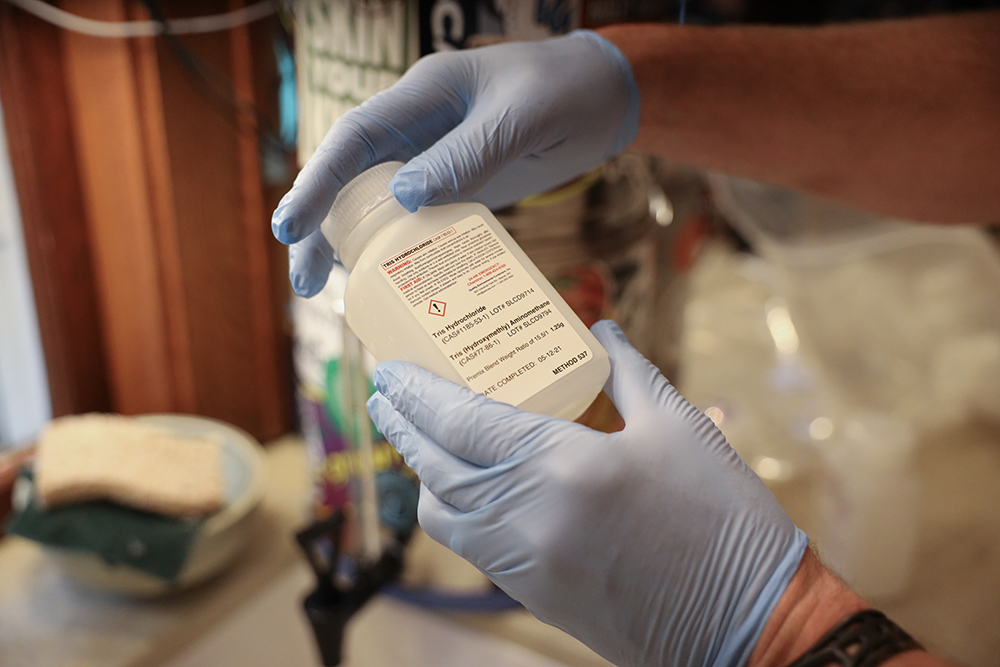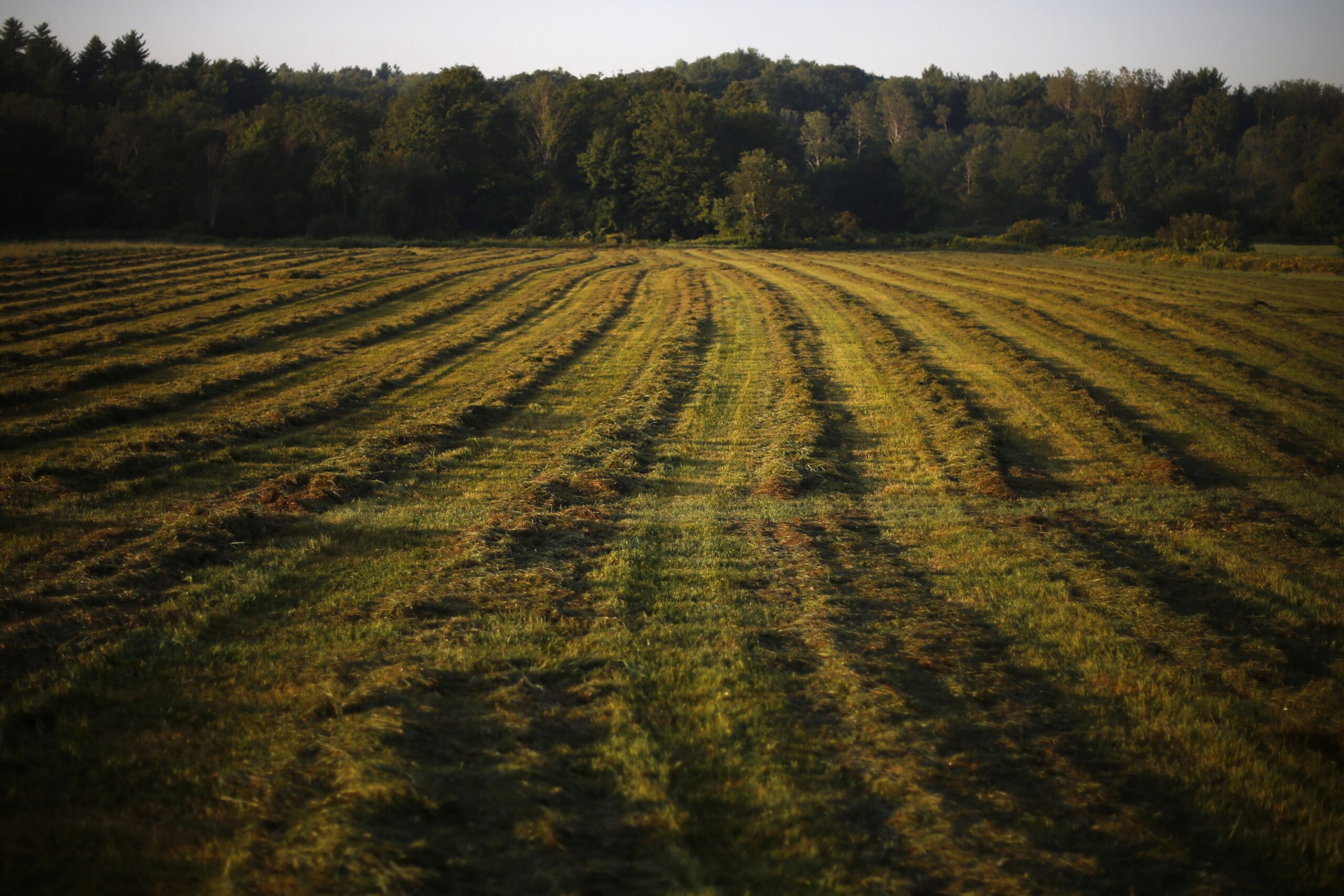A statewide groundwater study has found PFAS within roughly 7 in 10 private wells, but state environmental regulators say areas with significant contamination from the chemicals are limited.
The Wisconsin Department of Natural Resources released the findings Friday as part of a study conducted with funding from the U.S. Environmental Protection Agency. The study was published Thursday in the peer-reviewed scientific journal Environmental Science & Technology.
Under the study, researchers with the DNR, University of Wisconsin-Stevens Point and Wisconsin State Lab of Hygiene collected 450 samples from homes with shallow private wells no deeper than 40 feet throughout Wisconsin last summer and fall, most of which had PFAS levels below state health recommendations. Overall, the research found human waste — particularly septic systems — are significant sources of the chemicals. The highest levels of PFAS found may stem from waste spread on farmland.
News with a little more humanity
WPR’s “Wisconsin Today” newsletter keeps you connected to the state you love without feeling overwhelmed. No paywall. No agenda. No corporate filter.
Researchers analyzed samples for 44 individual PFAS, or per-and polyfluoroalkyl substances. Tests detected at least one chemical in 71 percent of samples, and 22 substances were found in one or more samples. Less than 4 percent of samples — 17 out of 450 — went beyond the EPA’s proposed drinking water limits of 4 parts per trillion for two of the most widely studied chemicals: PFOA and PFOS. Two samples contained the chemical PFHxS at levels concerning to federal environmental regulators.
“Those samples above the referenced PFAS levels tend to be associated with developed land and human waste indicators (artificial sweeteners and pharmaceuticals), which can be released to groundwater via septic systems,” the study reads.
The study also found samples of PFOA, PFOS, and PFHxS that had levels greater than 40 parts per trillion may be tied to “application of wastes to agricultural land.”
PFAS are a class of thousands of synthetic chemicals widely used by industry since the 1940s. They’ve been used in everyday products like nonstick cookware, food wrappers and firefighting foam. The chemicals don’t break down easily in the environment. Research shows high exposure to PFAS has been linked to kidney and testicular cancers, fertility issues, thyroid disease and reduced response to vaccines over time.
DNR crafting PFAS groundwater regulations
DNR Bureau of Drinking Water and Groundwater Director Steve Elmore said the information gained through the groundwater study will help the state achieve a better understanding of where PFAS exists in Wisconsin’s water. Private wells tested in the northern Wisconsin town of Stella represented some of the highest detections of the chemicals under the study. The agency has previously said sampling has detected levels as high as 35,000 parts per trillion for PFOA and PFOS.
Elmore said treated sewage sludge spread on farm fields, known as biosolids, has been identified as one potential source there. However, he said they haven’t drawn any conclusions yet.
“Some of the wells were adjacent to farm fields that may have received biosolids spreading,” Elmore said. “I would say this study raised the question about biosolids spreading, whether that impacts groundwater and whether additional study is needed on that topic.”
In the Town of Campbell near La Crosse, residents have been living with PFAS pollution of private wells. Town Supervisor Lee Donahue said the study’s findings show people should be concerned about what’s in their water, noting one-third of Wisconsin residents rely on private wells that draw from groundwater.
“The implications are far and wide-reaching, and we have to stem the flow,” Donahue said. “To me, the easiest way to at least begin to stem the flow is to say we are no longer going to allow PFAS in any manufacturing.”
States like Minnesota and Maine have banned using PFAS unless necessary for public health, and Minnesota-based 3M announced it would stop manufacturing all PFAS by the end of 2025. But industry groups like the American Chemistry Council have opposed “broad restrictions” on PFAS.
The study noted PFAS has been found in precipitation, biosolids, and industrial wastes from the manufacture of consumer products. They’ve also been found in toilet paper and other household items like carpets and stain-resistant clothing.
In the future, Elmore said the study will help the agency direct limited resources to address PFAS contamination. He noted funding isn’t currently available to test private wells around public water supplies where PFAS levels have exceeded standards recommended by the Wisconsin Department of Health Services.
The state enacted drinking water standards for PFAS last year of 70 parts per trillion. The DNR anticipates the state will have data on PFAS levels in all public water supplies by the end of the year.
However, the state is currently lacking groundwater standards. The DNR is currently crafting regulations for four PFAS in groundwater. The Wisconsin Department of Natural Resources has recommended a groundwater standard of 20 parts per trillion for two of the most common PFAS: PFOA and PFOS. The agency is recommending standards of 300 parts per trillion for GenX and 450 parts per billion for PFBS.
The DNR said groundwater standards would protect private well owners from exposure to the chemicals and reduce treatment needs for public water supplies that draw from groundwater.
The agency said private well owners with PFAS contamination may be eligible for grants under the Well Compensation Grant Program to install new wells or water treatment systems.
Wisconsin Public Radio, © Copyright 2026, Board of Regents of the University of Wisconsin System and Wisconsin Educational Communications Board.





